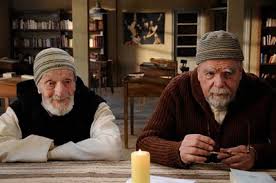WHAT IS THE JESUS PRAYER?
- The Pilgrim… (The Way of the Pilgrim)

Lord Jesus Christ, have mercy on me!
- Dr. Albert S. Rossi (www.svots.edu)
Lord Jesus Christ, Son of God, have mercy on me, a sinner.
- Monks of old…
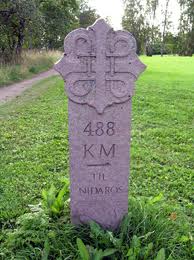
Lord make haste to help me. Lord, make speed to save me.
- Abba Macarius of Egypt…
Lord, according to your desire and your wisdom, have mercy.
Lord, save me!
…or…
Lord!
** In all versions of the prayer…
the Lord knows what is best for us, and will have mercy on us.
THE WAY OF THE PILGRIM and THE PILGRIM CONTINUES HIS WAY
This dearly-loved work tells the tale of a nineteenth-century anonymous peasant’s quest for the secret of prayer. In his journey, the Pilgrim seeks to find an answer to one question: “How does one pray constantly?”
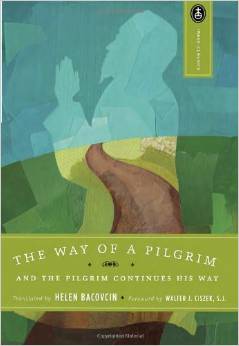 The Pilgrim turned to his elder: “I heard that it is necessary to pray without ceasing, but I do not know how to pray without interruption and I cannot even understand what is meant by ceaseless prayer.” (p. 5)
The Pilgrim turned to his elder: “I heard that it is necessary to pray without ceasing, but I do not know how to pray without interruption and I cannot even understand what is meant by ceaseless prayer.” (p. 5)
The elder answered the Pilgrim: “The ceaseless Jesus Prayer is a continuous, uninterrupted call on the holy name of Jesus Christ with the lips, mind and heart; and in the awareness of His abiding presence it is a plea for His blessing in all undertakings, in all places, at all times, even in sleep.” (p. 9)
The elder, teaching the Pilgrim about prayer, instructed him to use rosary beads for counting  and to begin by saying “the Prayer at least three thousand times a day; do not add to or take away from this number by yourself. Through this exercise God will help you to achieve the ceaseless activity of the heart.” (p. 11)
and to begin by saying “the Prayer at least three thousand times a day; do not add to or take away from this number by yourself. Through this exercise God will help you to achieve the ceaseless activity of the heart.” (p. 11)
After a number of days, the Pilgrim found, “that when I was not saying the Prayer, a need arose within me to say it, and I began to say it then with much greater ease than I had experienced at the beginning.” The elder then suggested that he recite the prayer six thousand times a day. “God will reward your effort.” (p. 12)
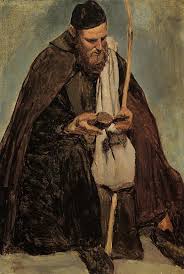 Ten days later, the elder visited and heard the account of the Pilgrim. Urging him to “continue with this good habit and strengthen it,” the elder instructed the Pilgrim to recite the Prayer twelve thousand times a day. (p. 12)
Ten days later, the elder visited and heard the account of the Pilgrim. Urging him to “continue with this good habit and strengthen it,” the elder instructed the Pilgrim to recite the Prayer twelve thousand times a day. (p. 12)
With much perseverance, the Pilgrim forged through the challenges of counting and completing the 12,000 prayers by day’s end…until…“Once, early in the morning the Prayer seemed to awaken me….I seemed to be in another world, and with great ease I recited twelve thousand Prayers by early evening. I would have liked to continue but I could not go against the directions of the elder.” (p. 12-13)
Finally, giving praise that the Pilgrim had “a longing for the Prayer and that the recitation of it comes easily,” the elder told him, “Only the simple and loving hearts who are earnestly seeking the Lord are found worthy of this! Now you may recite the Prayer as many times as you wish; call on the name of Jesus all your waking moments, without counting, and humbly resign yourself to God’s will expecting help from Him. I believe that He will direct your path and will not forsake you.” (p. 13)
The Pilgrim reflected to himself: “And do you know what happened? I became so accustomed 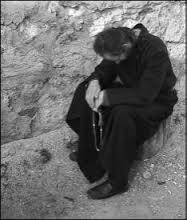 to the Prayer that if for a short while I stopped reciting it, I felt as if I were missing something, as though I had lost something. When I would begin reciting the Prayer again, I would immediately feel great joy and delight.” (p. 12)
to the Prayer that if for a short while I stopped reciting it, I felt as if I were missing something, as though I had lost something. When I would begin reciting the Prayer again, I would immediately feel great joy and delight.” (p. 12)
Lord Jesus Christ, Son of God, have mercy on me a sinner.
In his later journeys, the Pilgrim encountered a ship captain who asked him, “And what is more valuable, the Jesus Prayer or the Gospel?” (p. 23)
“They are equal in importance,” the Pilgrim answered, “because the holy name of Jesus Christ contains within itself all the truths of the Gospel. The holy Fathers say that the Jesus Prayer is the abbreviated form of the Gospel.”
THE GREATNESS OF THE JESUS PRAYER
A Greek monk from Mount Athos had traveled to Russia to collect money to build their monastery. He became seriously ill and could not travel. The Pilgrim agreed to stay with him until he had recovered. They spent many days together, passing the time discussing spiritual matters. The monk was also a devotee of the Jesus Prayer and explained the power of the prayer to the Pilgrim:
“The greatness of the Jesus Prayer is revealed in its very form which consists of two parts. The first part, ‘Lord Jesus Christ, Son of God’ leads the mind into the history of the life of Jesus Christ, or as the Fathers explain, it contains within itself the short form of the Gospel. And the second part, ‘have mercy on me a sinner,’ tells the story of our weakness and sinfulness in an extraordinary way because it is not possible for a poor, humble, and sinful soul to express its petition more fundamentally and precisely….the expression ‘have mercy on me’ not only sets for the petition for forgiveness, which is the result of fear, but is a sincere cry of filial love and trust in the mercy of God; it is a cry of a soul humbly aware of its weakness and lack of control in its vigilance over self. It is a cry for pardon, grace and strength from God….” (p. 113, The Pilgrim Continues His Way)
************************************
 The Way of a Pilgrim * The Pilgrim Continues His Way, translated by Helen Bacovcin, New York: Image Books, Doubleday, 1978.
The Way of a Pilgrim * The Pilgrim Continues His Way, translated by Helen Bacovcin, New York: Image Books, Doubleday, 1978.
This dearly-love work tells the tale of a nineteenth-century anonymous peasant’s quest for the secret of prayer. In his journey, the Pilgrim seeks to find an answer to one question: “How does one pray constantly?”


